In the Dungeons & Dragons fantasy role-playing game, psionics are a form of supernatural power similar to, but distinct from, arcane and divine magic.
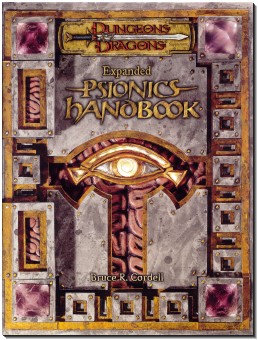
The Expanded Psionics Handbook is a sourcebook written by Bruce Cordell for the 3.5 edition of the Dungeons & Dragons fantasy roleplaying game that contains rules and options for integrating psychic powers into the game. Along with its predecessor, the Psionics Handbook, the Expanded Psionics Handbook expands and adapts the psionics concept with a new emphasis on balance and playability.
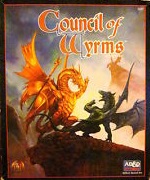
Council of Wyrms is a Dungeons & Dragons setting and boxed set, published in 1994.
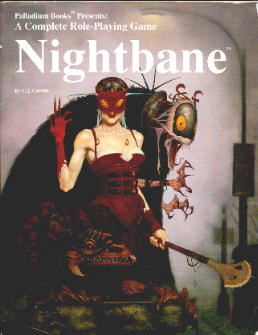
Nightbane is a dark fantasy role-playing game and setting created by C. J. Carella and published by Palladium Books.

Complete Psionic is a supplemental rulebook for the 3.5 edition of the Dungeons & Dragons role-playing game published by Wizards of the Coast and released in April 2006. It is the first 3.5 edition supplemental rulebook published by Wizards of the Coast which focuses on psionics since the Expanded Psionics Handbook.
The Arms and Equipment Guide is the name of two supplementary rule books for the Dungeons & Dragons fantasy role-playing game. Each describes various equipment that can be used in a campaign.
Cthulhu Live is a live-action roleplaying game (LARP) version of the popular horror roleplaying game Call of Cthulhu, based on the works of horror author H. P. Lovecraft.

Conspiracy X is a role-playing game (RPG) originally released by New Millennium Entertainment in 1996, and since revised and released by several publishers including Steve Jackson Games and Eden Studios, Inc. In all versions, the setting posits that aliens are insiduously taking over the world, reminiscent of The X-Files.

The Complete Book of Humanoids is a sourcebook for the second edition of the Advanced Dungeons & Dragons fantasy adventure role-playing game.

Player's Option: Combat & Tactics is a supplemental sourcebook to the core rules of the second edition of the Advanced Dungeons & Dragons fantasy role-playing game. This 192-page book was published by TSR, Inc. in 1995. The book was designed by L. Richard Baker III and Skip Williams. Cover art is by Jeff Easley and interior art is by Doug Chaffee, Les Dorscheid, Larry Elmore, Ken and Charles Frank, Roger Loveless, Erik Olson, and Alan Pollack.

Player's Option: Skills & Powers is a supplemental sourcebook to the core rules of the second edition of the Advanced Dungeons & Dragons fantasy role-playing game.

The Complete Fighter's Handbook is a supplemental rulebook published in December 1989 for the 2nd edition of the Advanced Dungeons & Dragons fantasy role-playing game. Accompanying manuals are The Complete Thief's Handbook, Priest's Handbook, and Wizard's Handbook.

The Complete Thief's Handbook is a supplemental rulebook published in 1989 for the 2nd edition of the Advanced Dungeons & Dragons fantasy role-playing game. Accompanying manuals are The Complete Fighter's Handbook, Priest's Handbook, and Wizard's Handbook.

The Complete Wizard's Handbook is a supplementary rulebook published in 1990 for the 2nd edition of the Advanced Dungeons & Dragons fantasy role-playing game. Accompanying manuals are The Complete Fighter's Handbook, Priest's Handbook, and Thief's Handbook.

The Will and the Way is an accessory for the 2nd edition of the Advanced Dungeons & Dragons fantasy role-playing game, published in 1994.
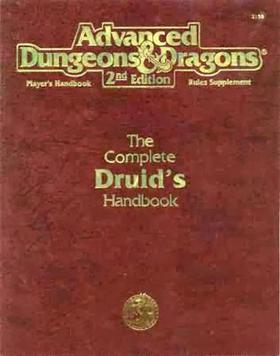
The Complete Druid's Handbook is an accessory for the 2nd edition of the Advanced Dungeons & Dragons fantasy role-playing game.

GURPS Horror is a sourcebook for GURPS. The first edition was published in 1987.

Comme il Faut: All Things Right and Proper is a supplement published by R. Talsorian Games in 1995 for the fantasy steampunk role-playing game Castle Falkenstein.

GURPS Psionics is a supplement by David Pulver, published by Steve Jackson Games in 1991 for GURPS.
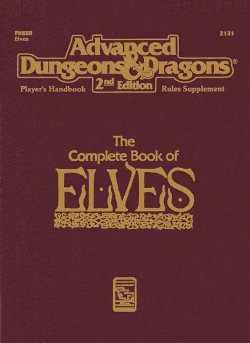
The Complete Book of Elves is a supplementary sourcebook published by TSR in 1993 for the 2nd edition of the Advanced Dungeons & Dragons fantasy role playing game.

















